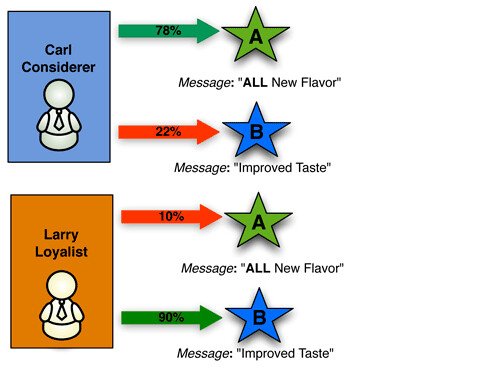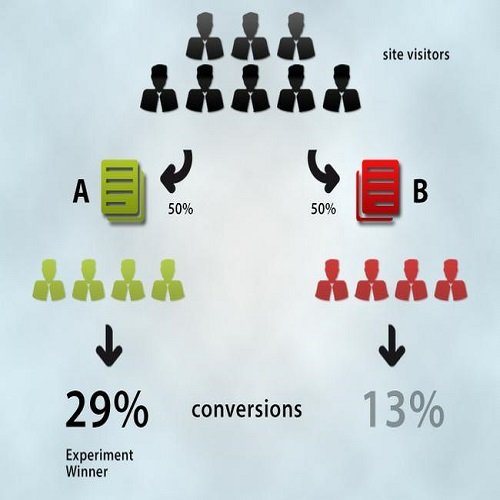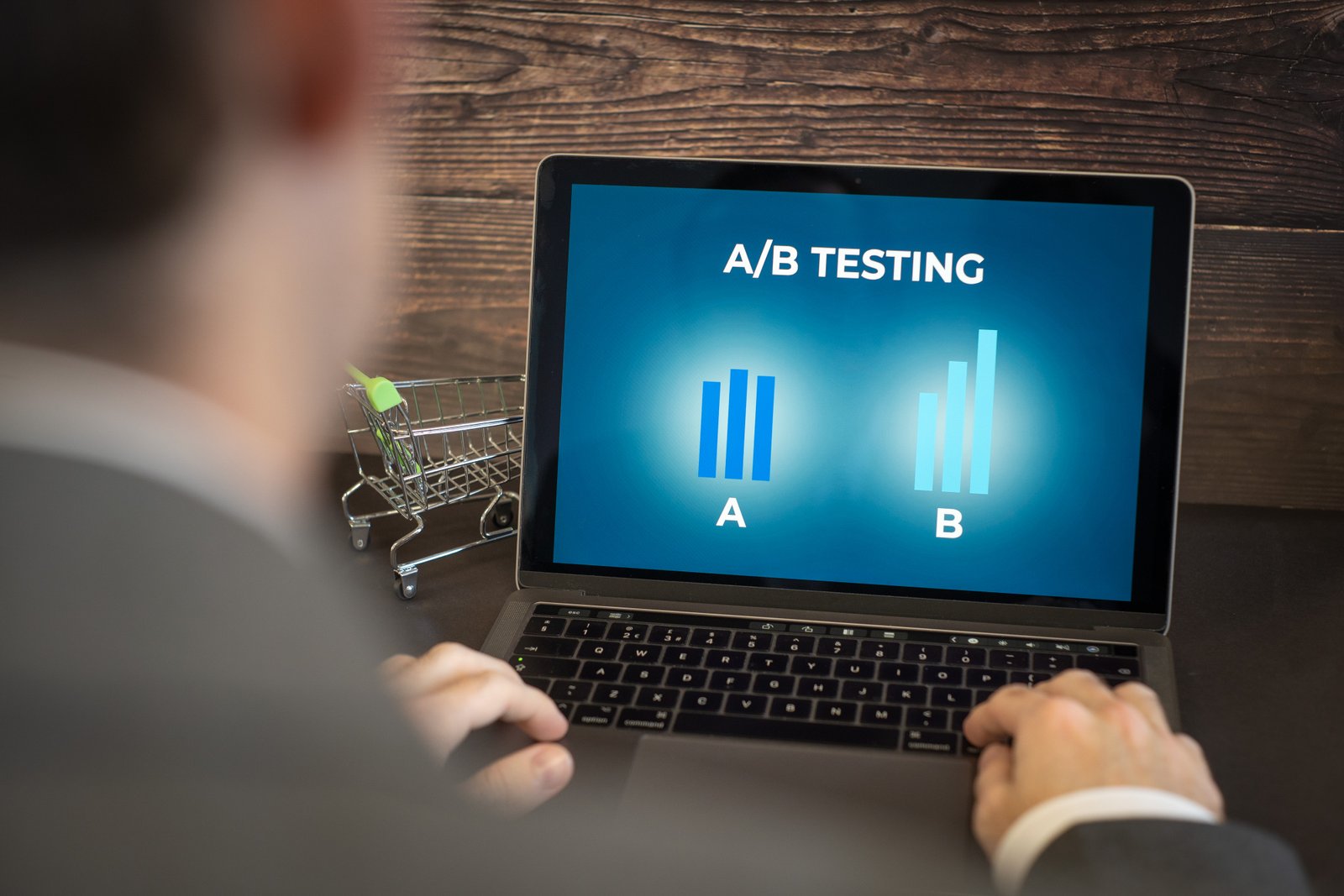In a world driven by digital innovation, where online markets thrive and virtual storefronts blossom, eCommerce has become the new frontier of business strategy. But amidst the fierce competition and ever-changing consumer demands, how can businesses ensure that their online strategies are truly effective? Enter the hero of the digital domain: A/B testing. This unassuming yet mighty tactic has emerged as the secret weapon for unlocking eCommerce success, allowing businesses to truly understand their customers and tailor their offerings to perfection. In this article, we will embark on a journey to peel back the layers of A/B testing, uncovering its hidden truths and exploring the power it holds to revolutionize the eCommerce landscape. So fasten your virtual seatbelt, as we dive into the realms of eCommerce’s winning strategy and discover the transformative potential of A/B testing.
Table of Contents
- Unleashing the Potential of A/B Testing: Elevating eCommerce Conversion Rates
- Uncovering Key Insights: How A/B Testing Can Optimize User Experience and Engagement
- Unlocking Success: Strategies and Best Practices for Effective A/B Testing in eCommerce
- Transforming Data into Impactful Decisions: Leveraging A/B Testing for Enhanced Conversions
- Q&A
- In Retrospect

Unleashing the Potential of A/B Testing: Elevating eCommerce Conversion Rates
A/B testing has emerged as an indispensable tool in the realm of eCommerce, paving the way to unlock the full potential of achieving higher conversion rates. If you are new to the world of online selling, fret not, for we are here to guide you through the process and help you grasp the true essence of this powerful strategy. By the end of this post, you will understand the ins and outs of A/B testing, its benefits, and how it can drive significant growth for your online business.
At its core, A/B testing involves creating two versions (A and B) of a web page, email campaign, or a call to action, and then comparing the performance of both to determine which version yields better results. This process allows you to make data-driven decisions and optimize your eCommerce website to meet the needs and preferences of your target audience.
Wondering how A/B testing can exactly impact your eCommerce conversion rates? Here are a few key ways it can elevate your business to new heights:
- Optimized user experience: A/B testing enables you to fine-tune your website design, layout, and navigation based on real user feedback. By testing different iterations, you can discover what resonates best with your audience and create a seamless experience that increases customer satisfaction and conversions.
- Improved call to actions (CTAs): A/B testing allows you to experiment with different CTAs to find the ones that generate the highest click-through rates. From button colors to copy variations, these small tweaks can have a profound impact on guiding users towards completing desired actions on your website.
- Personalization and customization: With A/B testing, you can segment your audience and deliver tailored experiences. By displaying different versions of your website or targeted offers to specific groups, you can cater to their unique preferences and boost engagement.
- Reduced bounce rates: By testing and optimizing elements like page load times, layout, and content positioning, you can reduce bounce rates and encourage visitors to stay longer on your website. This can directly improve the chances of conversions and sales.

Uncovering Key Insights: How A/B Testing Can Optimize User Experience and Engagement
A/B testing is a powerful tool for eCommerce businesses looking to optimize user experience and engagement. By comparing two versions of a webpage or app, businesses can identify which elements are most effective in achieving their goals. Here, we uncover key insights into the benefits of A/B testing and how it can be used to drive success in the world of online retail.
Firstly, A/B testing allows businesses to make data-driven decisions. By testing different variations of a webpage or app, companies can collect quantitative data on user behavior and preferences. This data can then be used to inform design choices and determine the most effective layout, color scheme, or content placement. For example, an eCommerce company might test two different call-to-action buttons on their product page to see which one leads to a higher conversion rate. With A/B testing, businesses can confidently make changes that are backed by evidence, rather than relying solely on intuition.

Unlocking Success: Strategies and Best Practices for Effective A/B Testing in eCommerce
In today’s hyper-competitive world of eCommerce, unlocking the key to success is no easy feat. However, there is a powerful tool that can inject new life into your online business and drive remarkable growth – A/B testing. A/B testing, also known as split testing, allows you to experiment with different variations of your website or marketing campaigns to determine which one yields the best results. It’s like having a crystal ball that reveals what your customers want, and it can significantly boost your conversion rates and revenue.
So, how does A/B testing work? Let’s break it down into simple steps:
1. Identify your goal: Before you embark on your A/B testing journey, clearly define your objective. Are you aiming to increase your click-through rates, improve your conversion rates, or boost the average order value? Having a specific goal in mind will help you focus your efforts and measure success accurately.
2. Create your variations: Once you have your goal in mind, it’s time to brainstorm and create different variations of your webpage or marketing element. Whether it’s testing different headlines, colors, layouts, or calls-to-action, each variation should have a distinct element that you believe can impact user behavior.
3. Divide and conquer: Now, it’s time to split your audience into two groups: the control group and the test group. The control group experiences the current version of your webpage or campaign, while the test group encounters the variations you’ve created. This ensures that your experiment is fair and provides reliable results.
4. Run the test: Launch your A/B test and let it run its course. Monitor the key performance indicators closely to see which variation is outperforming the others. It’s essential to give your experiment enough time to gather sufficient data before drawing conclusions.
5. Analyze and optimize: Once you have collected enough data, analyze the results. Identify the winning variation and apply it to your website or campaign. Remember that A/B testing is an iterative process, and even small changes can have a significant impact on your business. Continuously optimize and iterate to unlock the full potential of A/B testing.
A/B testing has proven its effectiveness in the eCommerce world, helping businesses refine their strategies and drive substantial growth. Companies like Amazon have utilized A/B testing to optimize their user experience and increase customer engagement. For example, they experimented with different website layouts, placement of buttons, and even the color of the “Add to Cart” button. These simple changes resulted in higher conversion rates and increased revenue for the e-commerce giant.
In conclusion, A/B testing is a powerful tool in the arsenal of any eCommerce business. It allows you to make data-driven decisions, optimize your website or campaigns, and ultimately unlock the secret to success. Embrace the power of A/B testing, and watch as your online business thrives and surpasses your wildest expectations.
Transforming Data into Impactful Decisions: Leveraging A/B Testing for Enhanced Conversions
A/B testing is a powerful tool that allows eCommerce businesses to make data-driven decisions and maximize their conversions. By comparing two versions of a webpage or app, A/B testing can help determine which variation performs better and leads to more successful outcomes. In essence, it is like conducting an experiment where visitors are randomly divided into two groups: one group sees the original page (version A) while the other is shown a modified version (version B).
For example, let’s say an online clothing store wants to improve their product page layout in order to drive more sales. They decide to A/B test two different versions: version A with the current layout and version B with a simplified layout and larger product images. By collecting data on conversion rates, bounce rates, and other relevant metrics, the store can determine which version drives more sales and leads to enhanced customer engagement. This information can then be used to confidently make impactful decisions, such as implementing the winning layout across the entire website, resulting in improved conversions and revenue.
Q&A
Q: Have you ever wondered how successful e-commerce companies consistently optimize their websites for maximum conversions?
A: Discover the secret behind their success by leveraging the power of A/B testing!
Q: What exactly is A/B testing and how does it work?
A: A/B testing is a method used by e-commerce businesses to compare two versions of a webpage or element to determine which one performs better. It involves creating two variants, A and B, and directing a segment of your website traffic to both versions. By analyzing user engagement, conversion rates, and other metrics, you can determine which variant is more effective in driving desired results.
Q: What are the key benefits of A/B testing in the world of e-commerce?
A: A/B testing offers several invaluable benefits for e-commerce businesses. Firstly, it allows companies to make data-driven decisions rather than relying on guesswork or intuition. By testing different variations, you can understand what resonates best with your target audience. Additionally, A/B testing reduces risks associated with implementing significant website changes by validating potential modifications before rolling them out to your entire user base.
Q: How can A/B testing optimize the user experience on an e-commerce website?
A: A/B testing enables e-commerce companies to identify and address potential friction points in the user experience. By testing different layouts, navigation options, or call-to-action buttons, you can determine which elements lead to improved user engagement, higher conversion rates, and increased customer satisfaction.
Q: Are there any specific areas on an e-commerce website where A/B testing can generate significant improvements?
A: Absolutely! A/B testing can be applied to various aspects of an e-commerce website, such as product descriptions, pricing models, page layouts, checkout processes, and even media elements like images or videos. Each of these components can greatly impact the user’s decision-making process, making them perfect candidates for optimization through A/B testing.
Q: How can businesses ensure the accuracy and reliability of their A/B test results?
A: To ensure accurate A/B test results, it is crucial to define clear objectives, select an appropriate sample size, and run the test for an adequate duration. Additionally, it is essential to focus on statistically significant differences between variants to avoid drawing false conclusions based on random fluctuations.
Q: Is A/B testing a one-time activity, or should it be an ongoing practice for e-commerce companies?
A: A/B testing is not a one-time activity but rather an ongoing practice. Successful e-commerce companies constantly test and refine their websites to adapt to changing user preferences, market trends, and innovations. By continuously optimizing through A/B testing, companies can stay ahead of the competition and maximize their conversion rates and revenues.
Q: Can small and medium-sized e-commerce businesses also benefit from A/B testing?
A: Absolutely! A/B testing is not limited to large enterprises only. In fact, small and medium-sized e-commerce businesses can benefit even more from A/B testing as it allows them to compete on equal footing with bigger players. This powerful strategy enables businesses of all sizes to achieve significant improvements in their conversion rates and overall profitability.
Q: What are some additional tools or resources that can assist e-commerce businesses in implementing A/B testing?
A: There are numerous A/B testing tools available, such as Optimizely, Google Optimize, or VWO, that provide user-friendly interfaces and statistical analysis capabilities. Additionally, e-commerce businesses can also seek guidance from experienced digital marketing agencies or consultants who specialize in A/B testing and website optimization.
Q: Are there any potential challenges or limitations to consider when implementing A/B testing?
A: While A/B testing is a highly effective strategy, it does come with its own set of challenges. It requires careful planning, resource allocation, and technical implementation. Additionally, it is crucial to avoid common pitfalls like sample bias, test interference, or making decisions based on inconclusive data. However, with proper planning and execution, these challenges can be overcome, and the rewards of improved conversions and customer satisfaction make it well worth the effort.
In Retrospect
In conclusion, the world of eCommerce has indeed entered a remarkable era of innovation and transformation. By harnessing the power of A/B testing, businesses have found an unparalleled strategy that unveils hidden potential, ignites growth, and alchemizes success.
As we traverse the digital realm, we no longer need to rely on mere intuition or hopeful guesswork. The era of taking shots in the dark has been eclipsed by the scientific precision of A/B testing. Gone are the days of lost opportunities and missed revenue; every decision can now be fine-tuned, every element optimized, and every customer engaged.
Imbued with this newfound power, eCommerce businesses no longer fear venturing into uncharted territories. They have become agile innovators, our entrepreneurial pioneers, ever poised to adapt and conquer. Through A/B testing, they can effortlessly navigate the treacherous waters of competition, charting a course towards the shores of unparalleled success.
From the humble beginnings of the digital realm, where flickering pixels danced across rudimentary screens, to the sophisticated landscape we now inhabit, A/B testing has been the fulcrum of growth and prosperity. It breathes life into every minutiae of the customer experience, peeling back the layers of mediocrity to reveal the true desires and preferences of our valuable patrons.
But let us not rest on our laurels, for the world of eCommerce will forever evolve. As technology continues to transcend boundaries and redefine possibilities, so too must our strategies adapt. A/B testing, with its unwavering commitment to data-driven decision making, will light our path even in the face of uncertainty.
And so, we bid you farewell, oh knights of eCommerce, armed with the secret weapon of A/B testing. May you journey forth with curiosity and courage, roaming the vast digital landscape in search of the next breakthrough. Remember, the power to shape your destiny lies within each experiment, each iteration, and each test. Bon voyage, dear readers, as you embark on the infinite journey of discovering eCommerce’s winning strategy: the power of A/B testing.

